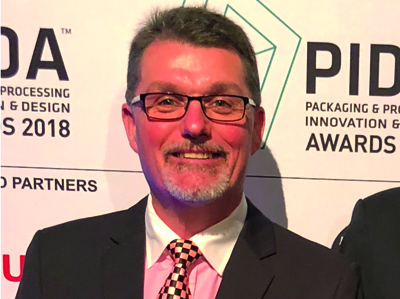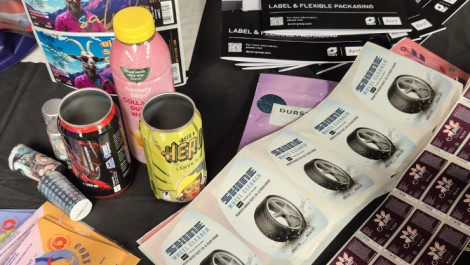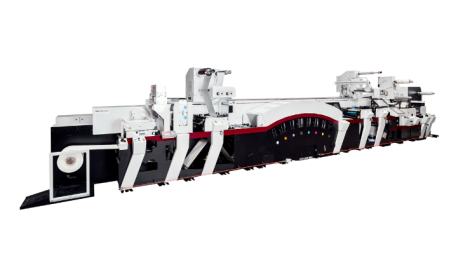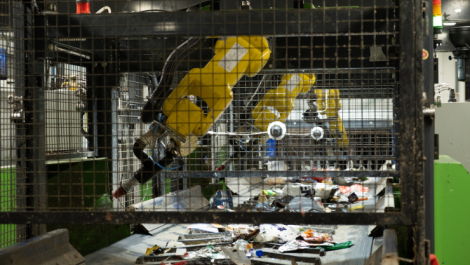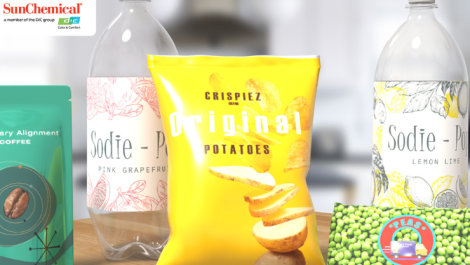Joe Foster
Interview with Joe Foster, co-founder and managing director of Omniverse Foster Packaging Group, Australia. By Des King.
However proficient a new technology might be, its ultimate success depends upon the results it delivers, and the vision and self-belief of its early adopters. HP would have eventually got around to extending its remit beyond labels to take in flexible packaging applications – but it would have undoubtedly been later rather than sooner had it not been with a little help from its friends, and one very remarkable friend in particular.
Irishman Joe Foster’s digital journey has been conducted at break-neck speed and taken him to the other side of the world, rewriting most of the rules of probability in the process. It is also a testament to what can be achieved by not necessarily having a digital press, but by having the courage of your convictions in pushing the boundaries in what to do with it. Hey Joe – way to go!
When and why did you extend into digital print?
I first got into digital 10 years ago after I set up Foster Packaging in Ireland back in 2002 and saw the opportunity to meet a need for short-run packaging. I initially approached some of the label manufacturers in Dublin to see whether they’d be interested in supplying me – and there was one prepared to manufacture up to a 50kg run on a Gallus label press. However, when we saw the HP ws4500 machine at drupa 2008 we opted to do it ourselves. The press was installed in December, and HP has since verified that we were the first dedicated short-run digital flexible packaging company in the world.
What were the main challenges you had to address?
Because the ws4500 was designed as a label press, we had to break all the rules with HP in order to get it to print flexible packaging applications. For example, whilst HP wanted to install and test the press with paper, we instead helped to develop a specialised primer coating to get the good adhesion on non-approved films going into non-approved markets. Since the materials we were printing on weren’t anywhere near as absorbent as paper, there were additional challenges to be overcome like build up of moisture inside the press.
The biggest difficulty we had to address, however, was the narrow 308mm print width x 450mm repeat length. When you make a pouch or a bag you normally print the front and the back together and then you fold it over into the pouch. Instead, we had to customise the machine so that it was possible to make a pouch using two webs of material. To get them to marry up together at the same time was quite a challenge as the tolerances on the Indigo press were very strict; if you’re moving 1mm over to the back it won’t match up.
And what have been the main gains?
It’s put us in a nice position in the market, especially so with a lot of start-ups – or even bigger companies too – that are looking to do short runs, seasonal products, test marketing and so forth. Having gone through that whole learning curve in Ireland being able to offer that capability was my foot in the door to the Australian market as I could say: ‘I can provide whatever you need whether it’s one, ten or a thousand bags.’ This was also a first.
When we got started here, we had quite a few printers coming to us for short runs and mock ups, but the main business was going straight to the end user as it had been in Dublin too. We call ourselves packaging superheroes because if you give us any challenge we can meet it; it doesn’t really matter what it is, we’ll figure it out.
How has customer awareness to digital developed over the years?
As far as our customers are concerned I don’t think their understanding of how the technology works is the important factor; it’s what it brings to their business that counts. We’ve always been able to maintain a strong retention of customers. It’s about the relationships that we have and being able to provide a solution. We’re problem solvers. When I see a problem raising its head I see it as an opportunity for strengthening our relationship with the client, and as a result gaining more business.
And how has digital helped you and them to develop your businesses?
When we got started in Australia in 2010 nobody else was involved with digital, not even importing. Label printers wanted to get into flexibles and thought it would be an easy transition, but it’s not – they’re two completely different disciplines. And that was another thing we had to consider in terms of the label language that HP use. For example: ‘What stock are you using?’ vs ‘What media are you using?’ A re-education process for HP was required too.
Between the South African and Australian companies, we have a steadily growing turnover that is all about the sales and marketing. Sure there are many other companies that can do the same, but for us it’s all about relationships and providing what sometimes appear to be impossible solutions. It’s a business model that can work pretty much anywhere in the world. We’re looking to open up an office in the EU, for example, so watch this space.
We’ve been doing short runs in Australia for the past six and a half years. Our current digital outsource is the HP Indigo 20000 with one printer here in Melbourne and a WS6800 in NSW. The thing about outsourcing, people think we’re an agent but we’re not. When we compare ourselves to our competitors: they will sell you packaging, we don’t just do that.
Looking back is there anything you wish you’d done differently?
The only thing I would have done differently is that I would have gone it alone – although I probably would have needed someone to help me to get started, for example, with arranging government grants. Working here in Australia alone to set up the first short-run digital flexible packaging process has been challenging, but successful, and now working with Brendan Yee, my business partner, has also been a totally different and positive experience.
We were the innovators with digital flexible packaging and in the early days, we facilitated a lot of events at which HP used to bring customers from all over the world to Ireland to see how we did things. We helped them with their engagement programme on the wider web; some of the things we suggested went all the way through to the machine they went on to develop.
What advice would you give to anyone adopting digital now?
Do your homework. Don’t believe all you read; definitely. The important thing is to understand the speeds of the machine. Get a very good grip on the costs of the process; it’s not as cheap as people make it out to be. The other thing I’d recommend is to do a market analysis to see that you’ve got a good customer base that will support you. And then I’d say try to come up with something that’s unique that you’re offering with that digital press, rather than being just another flexible packaging supplier: the specialised pouches, for example.
You’ve got to look at digital for its uniqueness; you can’t just see it as a tool for supply. We never sold on cost. The cost of speed to market is very unique, but we’re giving you an opportunity to be in front of your clients literally within days of them contacting you.
How do you see the future for digital print for packaging?
There’s definitely people coming from behind that have seen the success of HP and are ready to open up the market. We’ve used inkjet on a number of orders, however, you can see the difference in quality between inkjet and HP. That said I’m just waiting for a digital machine to come out of China. It’ll be an inkjet system and I believe it’s only a matter of time before that happens.
The advancement in digital at this moment is tremendous compared to say 10 years ago. Of course there’ll always be business for big volume stuff through flexo and gravure, but at the end of the day, you’re seeing companies utilising the selling advantage of digital for multiple SKUs, seasonal runs, etc. They’re getting used to that.
There are food companies now running their own digital print and pouch lamination lines. Could that be a threat to printers? No, because I think it’ll only be a niche amount. Nor would I say it will be the big guys, because they would be relying on the packaging manufacturers to supply that level of capability and know-how. My motto is let us be the experts on the packaging side and do the best possible job for you, and you be the experts on the food side. We’re better together.

